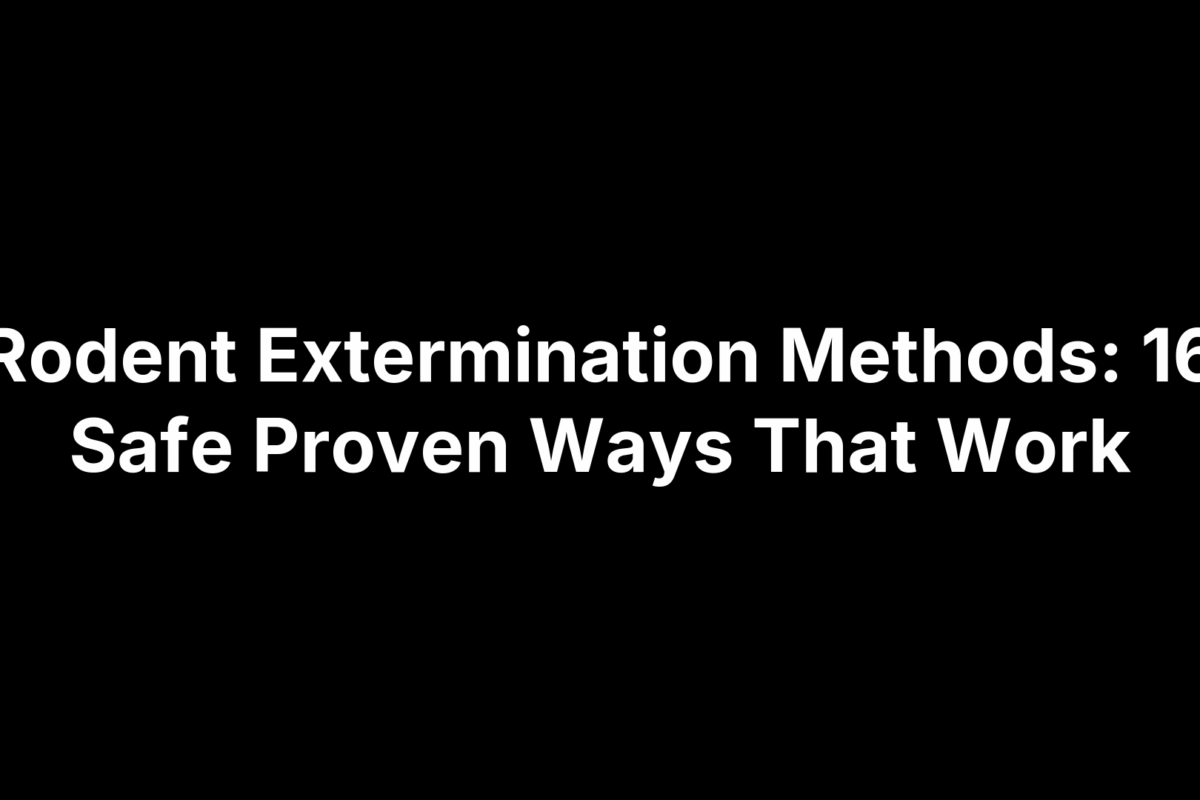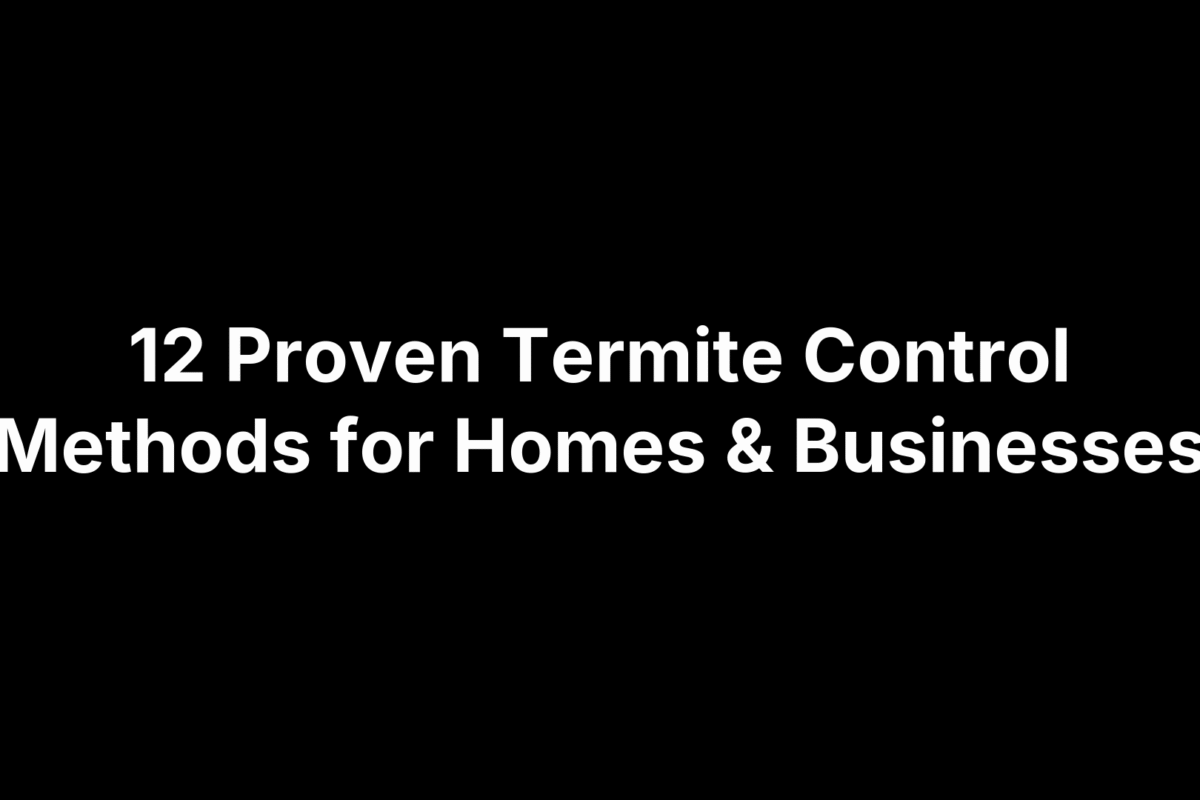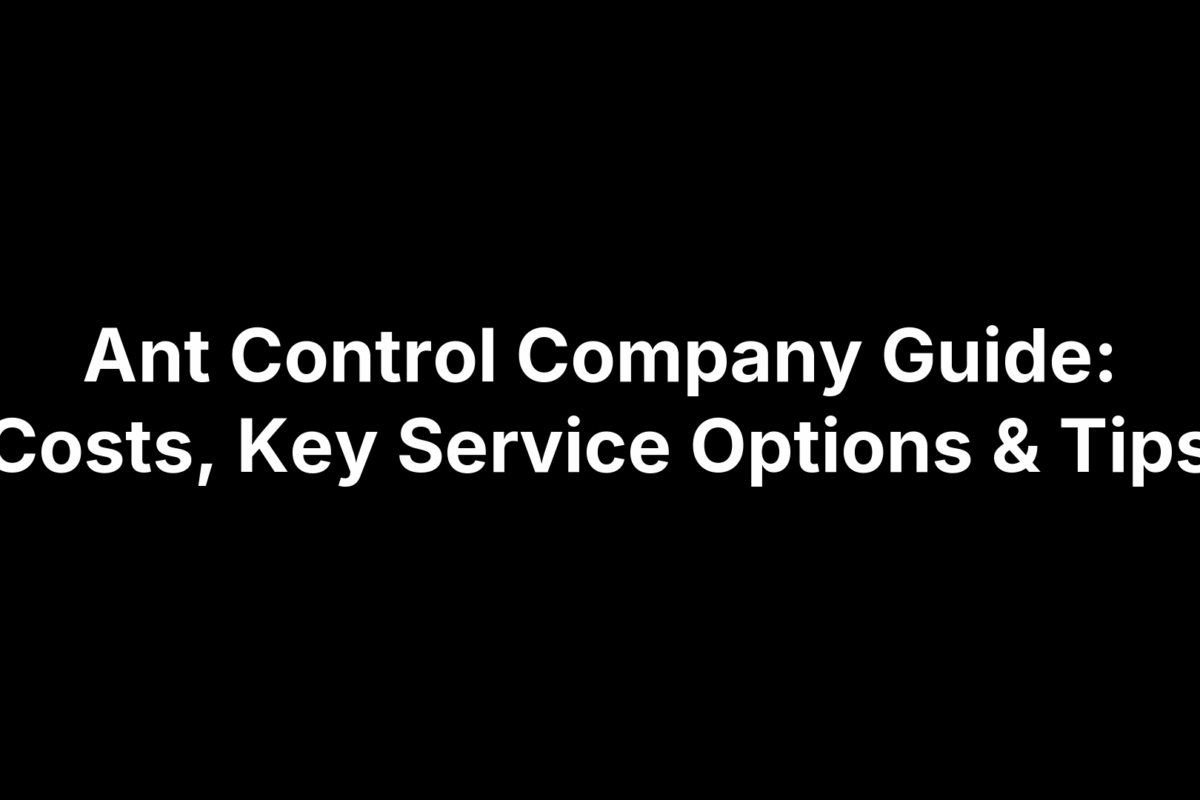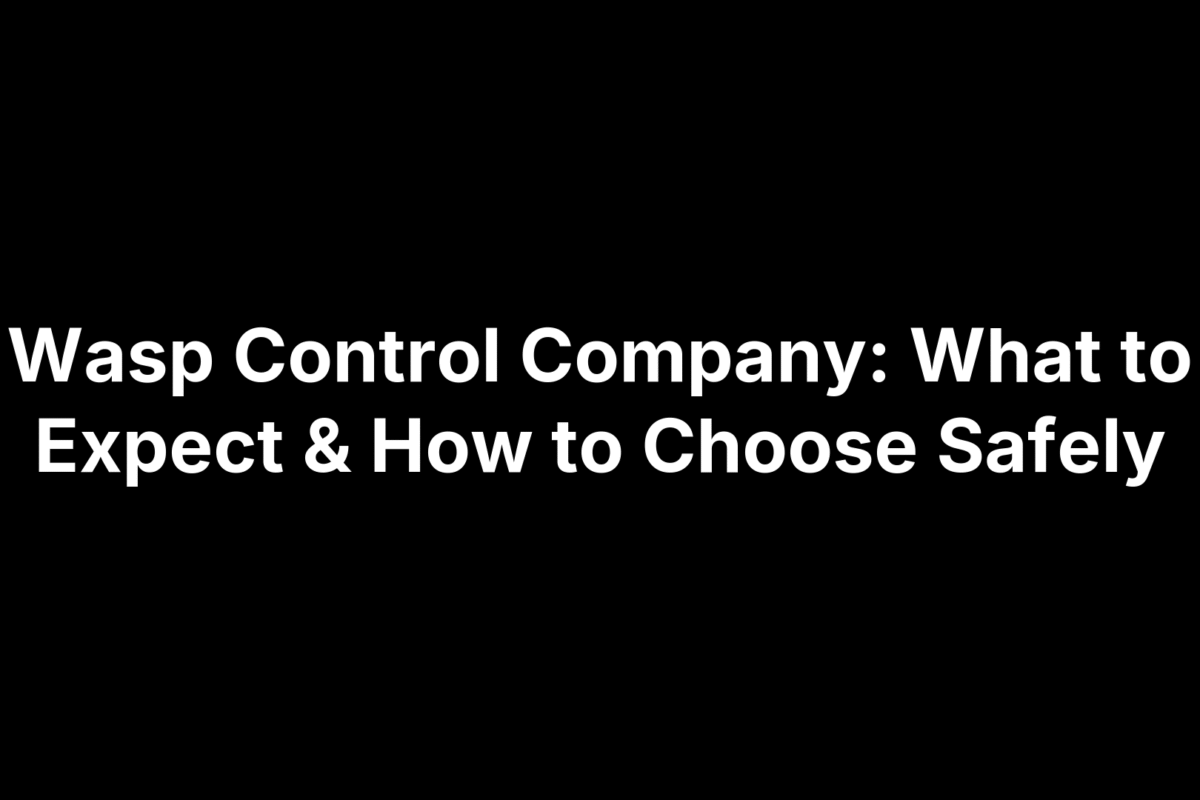Hear scratching in the walls after the lights go out? Finding nibble marks on cereal boxes? Those clues point to mice or rats already making themselves at home, but you don’t have to surrender the pantry. With the right blend of prevention, targeted traps, and—when needed—professional muscle, you can drive rodents out quickly without putting kids, pets, or wildlife at risk.
This guide breaks down 16 field-tested methods our technicians trust every day, from basic gap-sealing and snap traps to CO₂-powered devices and smart monitors. Whether you manage a restaurant, run a farm, or simply want peace of mind at home, you’ll see how each tactic works, what it costs, and when it makes sense to call Redi Pest Control for backup. Ready to reclaim your space? Let’s get started.
We’ll focus on house mice, roof rats, and Norway rats—the troublemakers that chew wires, contaminate food, and multiply at breakneck speed.
1. Hire a Licensed Pest Control Professional (Redi Pest Control LLC)
Before you fire up Amazon and fill a cart with traps, know this: bringing in a pro remains the single fastest way to knock down a large mouse or rat population and keep it down. Professional service folds multiple rodent extermination methods into one coordinated plan—and you don’t have to touch a single carcass.
Why professional intervention is often the quickest, safest choice
Google’s “fastest way to get rid of rodents” answer is traps, but traps work best when they’re the right type, quantity, and location. Licensed technicians have hundreds of training hours, access to regulated products the public can’t buy, liability coverage, and written guarantees. They also follow Integrated Pest Management (IPM) protocols that minimize poison and protect kids, pets, and non-target wildlife.
What Redi Pest Control’s rodent service looks like step-by-step
- Thorough inspection and species ID
- Sanitation and storage advice
- Sealing of entry points with chew-proof materials
- Targeted trapping or baiting based on activity maps
- Follow-up visits with monitoring devices to verify elimination
- Detailed report and prevention checklist for the client
Fast response is standard—most calls are scheduled within 24 hours.
Cost vs. DIY and when to call the pros
Expect $175–$300 for a typical home, $400+ for large commercial sites; heavy infestations may require monthly programs. Call immediately if you see dozens of droppings, fresh gnaw marks in multiple rooms, or hear scratching in walls and ceilings nightly—signs the situation has outgrown DIY.
2. Exclusion: Seal Structural Gaps & Holes
Before you set a single trap, block the highways rodents use to get inside. A mouse can flatten its body to slip through a gap as thin as ¼ inch, while an adult rat only needs ½ inch. Closing those spaces instantly lowers the number of new invaders and makes every other rodent extermination method work faster.
Identify the common entry points rodents exploit
- Cracks in foundations and basement windows
- Gaps around gas, HVAC, and cable penetrations
- Roof flashing, attic vents, and chimney caps
- Warped door sweeps or garage-door seals
- Torn screens and weep holes in brick veneer
Materials that actually work
- ¼″ galvanized hardware cloth for vents and soffits
- Steel wool packed with silicone caulk for small holes
- Non-shrink concrete or mortar for masonry cracks
- Aluminum door sweeps and kick plates for thresholds
DIY sealing checklist
- Gather gloves, flashlight, ladder, utility knife, caulk gun, and PPE.
- Inspect exterior at dusk with a headlamp; mark gaps with chalk.
- Clean opening, insert block material, then seal.
- Recheck after heavy rain or freeze-thaw cycles.
| Gap Type | Best Material | Notes |
|---|---|---|
| ⅛–¼″ joints | Steel wool + silicone | Replace if rusts |
| Pipe voids | Copper mesh + expanding foam | Foam alone is chewable |
| Vent openings | ¼″ hardware cloth | Screw, don’t staple |
| Door bottoms | Aluminum sweep | Ensure no daylight |
3. Remove Attractants: Sanitization & Food Storage
Rodents don’t stick around for the ambience—they stay because dinner is easy and nesting spots are plentiful. Strip away those perks and you’ll shrink the population faster than any single trap can. The CDC notes that droppings left where food is stored spread salmonella and hantavirus, so good hygiene protects your health as well as your sanity.
Why cleanliness matters
A single mouse needs only three grams of food per day; even a few crumbs under the stove keep it thriving. Routine cleanup denies that caloric lifeline and forces rodents to spend more time foraging—making them likelier to enter traps or baits.
Kitchen & pantry action plan
- Swap paper or cardboard packages for glass or thick plastic containers with gasket lids.
- Wipe counters and sweep floors every night; pay special attention to under-appliance voids.
- Feed pets on a schedule, lifting bowls after 30 minutes instead of free-feeding.
- Run the garbage disposal and take kitchen trash outside before bed.
Outdoor habitat modification
- Keep trash cans lidded and 10 ft from doors; rinse recyclables.
- Pick up fallen fruit and garden produce daily.
- Line compost bins with ¼″ hardware cloth and cover with a breathable lid.
- Trim dense vines and shrubs so the ground underneath gets sunlight and airflow—rodents avoid exposed areas.
4. Snap Traps: The Classic Quick-Kill Choice
No gadget has outsold the simple spring bar—and for good reason. Quality snap traps kill instantly, cost pennies per unit, and let you confirm every hit at a glance. When placed correctly, they out-perform poison in speed and avoid the stink of rodents dying in walls.
Choosing the right snap trap design
- Standard wooden bar traps handle house mice; upgrade to the larger T-shape or plastic easy-set versions for rats.
- Look for stainless steel springs; bargain traps fatigue quickly and misfire.
- Pre-bait new traps for a night unset so wary rodents sample food without fear.
Placement & baiting best practices
Set traps perpendicular to walls with trigger touching the baseboard—runways where whiskers naturally brush surfaces. Deploy in pairs back-to-back every 6–8 feet. Top baits: a pea-sized smear of peanut butter mixed with oats, or a raisin tied on with dental floss to prevent “lick and leave” theft.
Safety tips
Always compress the bar with a spoon handle, not fingers. Use cardboard tunnels or inverted shoe boxes with two-inch entry holes to shield pets and kids while guiding rodents toward the trigger. Empty and reset daily to maintain killing power.
5. Electric Kill Traps: High-Tech, Mess-Free Control
If you hate the sight of sprung bars and squished tails, battery-powered electric traps deliver a clean, instant kill with almost zero mess or odor. They fit seamlessly into an Integrated Pest Management plan and are especially handy for homeowners squeamish about classic snap devices.
How electric traps work
A scented lure draws the rodent onto metal plates; once all four feet complete the circuit, a high-voltage shock (around 7,000 V for 2–3 seconds) stops the heart and lungs immediately. An LED blinks to confirm a successful strike so you can dispose of the carcass without guessing.
Set-up and maintenance
Place units flush against walls in dry, low-dust areas—laundry rooms, pantries, or warehouse shelves. Remove crumbs, then bait only the back plate to force full entry. Empty, wipe plates with isopropyl alcohol, and replace batteries every 30–60 days to maintain peak amperage.
Pros, cons, and cost comparison
- Pros: humane quick kill, no blood splatter, reusable, safe inside tamper-resistant housings.
- Cons: higher upfront price ($30–$60 each), ineffective in damp crawl spaces.
- Overall: two well-positioned electric traps can rival a dozen snap traps for moderate infestations, making them a cost-effective upgrade in many rodent extermination methods.
6. Live-Catch Traps: Capture and Release Humanely
Not everyone is comfortable killing wildlife. When you’re dealing with a lone scout mouse or two, live-catch traps let you resolve the issue without lethal force and still mesh with other rodent extermination methods.
When humane relocation makes sense
Choose this route for light indoor activity, kids learning stewardship, or barns where resident snakes already control numbers.
Trap styles and baiting
Single-door box traps catch one mouse; multi-catch galvanized units flip repeaters inside. Bait with a dab of peanut butter on a cracker.
Release protocol for legal & ethical compliance
Transport captives at least five miles away, ideally to brushy field edges—not occupied homes. Wear gloves, disinfect cages, and check local wildlife rules first.
7. Multi-Capture Mechanical Traps for Heavy Infestations
When droppings seem to multiply faster than you can rebait snap traps, it’s time for multi-capture units. These wind-up or gravity-reset boxes can corral a dozen mice overnight, making them a cornerstone of large-scale rodent extermination methods.
What makes them different from single snap or live traps
Instead of one-and-done, an internal paddle wheel or see-saw ramp sweeps each mouse into a holding chamber, then resets automatically. No springs means no messy kill; you decide later whether to euthanize or release.
Optimal placement & servicing frequency
Line walls in basements, ceiling voids, or behind restaurant equipment—anywhere you see runway smudges every three to six feet. Empty and rebait daily to prevent odor and stress deaths.
Monitoring results
Log captures by date and location in a spreadsheet or notebook. A steady decline signals progress; if numbers plateau, add exclusion work or call Redi Pest Control for reinforcement.
8. Bait Stations With First-Generation Anticoagulant Blocks
When trapping alone stalls out, bait stations paired with first-generation anticoagulant blocks add quiet, around-the-clock pressure without exposing loose pellets. They slip under pallets, behind appliances, or along fence lines—places rodents feel safe grazing.
Understanding anticoagulant mode of action
Warfarin and diphacinone stop the clotting process by depleting vitamin K. Because illness shows slowly, rodents keep feeding, overcoming typical “bait shyness.” Expect mortality 3–7 days after several meals.
Setting up tamper-resistant stations safely
Use a Tier-1, dog- and child-resistant station labeled “Rodent Bait.” Thread 1-oz blocks onto rods, lock the lid, then anchor flush to walls with entrances tight to runways. Place every 15–30 ft for mice, 25–50 ft for rats; inspect weekly and replace only what’s consumed.
Reducing secondary poisoning risks
Multiple feedings mean carcasses hold less toxin, lowering risk to owls, cats, or dogs that might scavenge. Still, glove up and collect bodies daily, double-bagging before disposal. Once feeding slows, switch back to snap traps to finish the job and shorten exposure windows.
9. Cholecalciferol (Vitamin D3) Rodenticides: Reduced Secondary Poisoning
If you worry about owls, pets, or neighborhood cats scavenging poisoned carcasses, cholecalciferol baits offer a middle ground between trapping and classic anticoagulants. Formulated at doses lethal to rodents yet far below the threshold for most non-target wildlife, they fit neatly into modern Integrated Pest Management programs.
How vitamin D3 baits kill rodents without harming most wildlife
After several feedings, excess vitamin D3 pushes rodents into hypercalcemia—blood calcium spikes, calcifying organs and shutting down the kidneys within 24–48 hours. Larger mammals metabolize the compound more efficiently and would have to consume many blocks (or multiple carcasses) to reach toxic levels, so true secondary poisoning events are rare.
Best scenarios to use this product
Choose cholecalciferol in sensitive zones: raptor habitats, organic food warehouses, schools, or suburban yards where pets roam. It also shines in sites with documented anticoagulant resistance or where rapid clean-out is required but trapping access is limited.
Usage guidelines & legal restrictions
Only deploy inside locked, Tier-1 bait stations; place 15–30 ft apart for mice, 25–50 ft for rats. Never mix with anticoagulant blocks—rodents may avoid both. Follow EPA label rates (usually ≤4 lb per acre) and wear gloves when handling. A few states classify vitamin D3 bait as “restricted use,” so verify licensing rules before purchase.
10. CO₂-Powered Automatic Kill Traps (e.g., A24)
When you need round-the-clock rodent control but don’t have time to reset dozens of devices, a CO₂-powered trap is the closest thing to “set it and forget it.” One small cartridge fuels up to 24 instantly lethal strikes, making these units popular on farms, remote cabins, and commercial perimeters where staff visits are infrequent.
Technology overview
A food-grade lure draws the rodent up a small ramp; crossing the trigger fires a pressurized piston that delivers a swift cervical dislocation. The piston then auto-resets, and a built-in counter tracks every strike. No electricity or Wi-Fi needed—just swap the CO₂ cylinder after 24 kills or six months, whichever comes first.
Deployment strategy
Mount the trap 4–5 inches above ground on a stable post or wall so rats or mice must climb straight into the tunnel. Pre-feed with a dab of lure for two nights, then arm the unit. Check the digital or mechanical counter daily and clear carcasses from beneath to avoid attracting scavengers.
Environmental and humane advantages
Because the device uses compressed gas instead of toxin or electricity, it’s weather-proof, non-sparking, and safe in food-handling areas. Independent welfare audits classify the kill as “A-grade humane,” and the absence of poison eliminates secondary risks to pets, raptors, or other wildlife.
11. Dry Ice Fumigation for Burrowed Rats
Rats that live in lawn burrows dodge most surface traps. Converting those tunnels into a sealed carbon-dioxide chamber with dry ice is a fast, poison-free way to wipe out the entire nest right where it sleeps.
Chemistry and legality
Dry ice (CO₂ @ –109 °F) sublimates to heavy gas that displaces oxygen inside the burrow, asphyxiating rats within minutes. The EPA classifies it as a minimum-risk pesticide, yet many municipalities require park-department approval or a certified applicator, so always confirm local ordinances first.
Step-by-step application
- Wear thick, cryogenic gloves.
- Locate every active hole; look for fresh soil lips.
- Insert 2–3 lb of pebble-sized dry ice per entrance.
- Immediately backfill with soil or sod, tamping firmly to trap the gas.
- Recheck burrow the next day and re-treat if openings reappear.
Safety precautions
Only fumigate outdoors; never use under decks attached to occupied structures. Keep pets and children 10 ft away, post “CO₂ fumigation in progress” signage, and transport dry ice in ventilated coolers to prevent carbon-dioxide buildup inside vehicles.
12. Tracking Powder Rodenticides for Hard-to-Reach Spots (Pro-Use)
Some hiding spots—wall voids, drop ceilings, deep machinery cavities—are impossible to service with blocks or traps. In these cases, professionals turn to tracking powders as a stealthy last resort.
How tracking powders work
The powder contains a concentrated toxicant plus talc. As rodents squeeze through treated voids, dust clings to their fur and paws; during routine grooming they ingest a lethal dose within hours.
Application best practices
Technicians puff a thin, even layer onto inert cardboard or pipe insulation inside sealed spaces only—never where drafts, pets, or food can reach. Warning placards and respirators rated P100 are mandatory.
When to involve certified applicators
Because the dust can become airborne and harm people, the EPA limits sales to licensed pros. Call in a credentialed company if rodents nest behind drywall, inside elevator shafts, or above commercial kitchen ceilings.
13. Scent & Taste Repellents (Peppermint Oil, Ammonia, Picaridin)
Essential-oil sachets and strong odors aren’t silver bullets, but they can plug small gaps in your overall rodent extermination methods. Think of them as “keep-out” signs that buy you time until exclusion and trapping finish the job.
Evidence-based efficacy
Lab trials show peppermint, ammonia, and picaridin push mice away for about 72 hours before curiosity wins. Regular reapplication is mandatory; use them only as support, never the sole control measure.
DIY recipes vs. commercial sachets
- Soak cotton balls with 10–15 drops of 100 % peppermint oil; seal in mesh tea bags.
- Ready-made pouches last longer but cost more; replace either option weekly or when fragrance fades.
Where and how to deploy
Tuck odor sources into suspected entry points, vehicle engine bays, RVs, or seasonal cabins. Supplement with door sweeps and traps so returning rodents meet a wall of defenses.
14. Ultrasonic & Electromagnetic Repeller Devices
Those little plug-ins you see at hardware stores broadcast high-frequency sound (20–60 kHz) or send low-voltage pulses through a home’s wiring. They’re marketed as hands-off rodent extermination methods that rid a room without poison or cleanup duty.
Separating myth from measurable results
Independent studies show a brief drop in activity—usually a week—before mice habituate and return. In other words, they’re deterrents, not eliminators. Pairing them with traps gives you a data-backed one-two punch instead of relying on hype.
Installation tips for maximum coverage
Use one unit per enclosed room; ultrasonic waves don’t penetrate walls, furniture, or soft drapes. Mount at outlet height with the speaker facing open floor space, and keep background noise (fans, radios) to a minimum.
Complementary role, not standalone solution
Think of these devices as a “no-loitering” sign that keeps newcomers uneasy while your exclusion, sanitation, and trapping program delivers the actual knockout. When captures drop to zero, leave repellers on guard duty to discourage re-entry.
15. Encourage Natural Predators & Habitat Modification
The most hands-off rodent extermination methods don’t come in a box—they fly, run, or stalk on four paws. By making your property attractive to natural predators and less attractive to rodents, you create a self-sustaining control loop that costs almost nothing once established.
Beneficial predators
- Barn owls – one family can eat 3,000 rodents a season; silent, low-maintenance.
- Rat terrier dogs – instinctively hunt rats, but need supervision around livestock.
- Domestic cats – good for morale and occasional kills, yet may ignore adult rats and impact songbird populations.
Building and installing owl boxes
Craft a wooden box roughly 12" W × 12" D × 18" H with a 6-inch entrance hole. Mount 12–20 ft high on a pole or barn wall, entrance facing south or east to avoid prevailing storms. Add two inches of untreated pine shavings and keep the flight path clear.
Landscape design that discourages rodents
- Lay 18-inch gravel strips along foundations—rodents hate crossing open, abrasive ground.
- Raise chicken coops or sheds at least one foot off soil to eliminate burrow sites.
- Thin dense ivy and groundcover so sunlight reaches soil, removing cool, hidden runways rodents favor.
16. Continuous Monitoring: Smart Sensors & Follow-Up Trapping
Beating an active infestation is only half the battle; keeping it beaten requires eyes on the ground 24/7. Continuous monitoring pairs technology with old-school follow-up trapping so you catch the very first rodent that sneaks back in—before it can breed and rebuild the colony.
Why monitoring prevents reinfestation
- Rodents reach sexual maturity in as little as six weeks; even a single missed female can restart the problem.
- Real-time alerts let you reset or rebait traps the same day activity resumes, shortening population rebounds.
- Trend data pinpoints seasonal spikes (harvest time, first cold snap) so you can harden defenses proactively.
Types of smart devices
- Bluetooth trap sensors – clip onto snap or electric traps and ping your phone when triggered, saving daily crawl-space checks.
- Wi-Fi camera traps – motion-activated HD footage verifies species and entry direction for precise exclusion work.
- RFID bait stations – log every visit, showing how often and how long rodents feed, which helps fine-tune bait choice and placement.
Creating a maintenance calendar
- List all monitoring points in a Google Sheet: location, device ID, last service date, next check.
- Schedule quick visual inspections weekly, full sensor downloads monthly.
- After three consecutive “zero-activity” months, shift to quarterly checks but keep traps armed.
- Set calendar reminders (email or phone) so nothing slips through the cracks—consistency is the cheapest rodent extermination method of all.
Key Takeaways & Next Steps
Winning the war against mice and rats is rarely about one silver bullet. The 16 rodent extermination methods above work best as a package that blocks entry, removes food, delivers quick-kill pressure, and keeps watch so the pests never rebound. Remember:
- Start with exclusion and sanitation—every unsealed gap or crumb undermines other tactics.
- Match the tool to the problem: snap traps for singles, multi-capture or bait stations for colonies, pro help for heavy infestations.
- Choose lower-risk products first (electric traps, Vitamin D₃ baits) and reserve harsher chemicals for last resorts.
- Monitor continuously; data tells you when to scale back or tighten defenses.
If you’d rather skip the trial and error, schedule a free inspection with the technicians who use these strategies daily. Contact Redi Pest Control LLC for a customized, pet-safe Integrated Pest Management plan that kicks rodents out—and keeps them out—for good.






